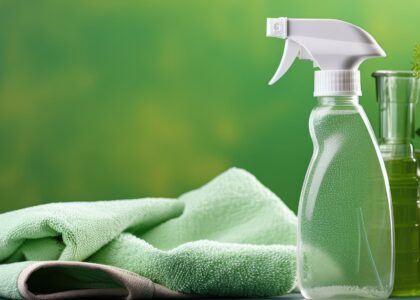Senior living communities are meant to be safe, welcoming spaces for elderly residents. Yet, some of the very products intended to keep these facilities clean and safe may carry hidden health hazards.
Many cleaning agents, building materials, and maintenance products contain toxic substances that can harm residents, particularly those with weakened immune systems or respiratory conditions. Recognizing these risks and seeking safer alternatives is essential to ensuring a healthy living environment.
The Hidden Risks of Disinfectants and Antibacterial Cleaners
Maintaining hygiene in senior living facilities is essential, and disinfectants play a key role. However, excessive use of certain disinfectants can contribute to growing concerns, such as antibiotic resistance.
Some cleaning solutions contain harsh chemicals, including quaternary ammonium compounds (QUATS), which may irritate skin and lungs. The National Pesticide Information Center warns that ADBAC, a type of QUATS, can affect mucous membranes even at low concentrations. Exposure to higher concentrations can damage these sensitive tissues.
To minimize risks, facilities should prioritize bleach-free disinfectants and ensure proper cleaning protocols to limit residents’ contact with harsh chemicals.
Pest Control Strategies That Protect Health
While pesticides help manage unwanted insects and rodents, they can also pose health challenges. Certain compounds in pesticides act as neurotoxins, potentially causing dizziness, headaches, or difficulty concentrating among vulnerable residents.
Implementing Integrated Pest Management (IPM) can reduce reliance on chemical pesticides. IPM focuses on non-chemical solutions, such as traps, physical barriers, and baits. When chemical intervention is necessary, choosing less toxic products and following safe application procedures is critical.
Firefighting Foams and the Threat of PFAS
Perfluorinated alkyl substances (PFAS), sometimes referred to as “forever chemicals,” are used in aqueous film-forming foam (AFFF) for fire safety. While effective at extinguishing fires, PFAS persist in the environment and accumulate in the body over time.
Recent studies show PFAS present in the blood of the majority of Americans. These chemicals have been linked to cancer, thyroid disorders, and immune system dysfunction. Facilities near airports, military sites, or firefighting training grounds may be particularly at risk for PFAS contamination.
Legal actions against PFAS manufacturers and users highlight the growing awareness of these risks. Communities near contaminated sites are pursuing claims due to health complications associated with exposure.
Air Fresheners and Fragrances: A Hidden Threat
Many air fresheners and scented cleaning products contain synthetic chemicals that mask odors rather than eliminate them. Some of these compounds can trigger allergies or respiratory issues, which is especially concerning for elderly residents.
As lung function naturally declines with age, exposure to volatile organic compounds (VOCs) and other chemicals in air fresheners can worsen breathing difficulties. Facilities should focus on proper ventilation, routine cleaning, and the use of safe, natural alternatives like essential oils in diffusers — always ensuring proper dilution to avoid irritation.
Frequently Asked Questions
Can AFFF cause respiratory issues or asthma?
Yes. Exposure to AFFF has been linked to respiratory complications, including asthma, especially with prolonged or repeated contact.
Are disinfectants harmful to human tissue?
Certain disinfectants can irritate or damage skin, eyes, and respiratory tissues, depending on the chemical concentration. Proper use and protective measures are essential.
Do air fresheners release harmful toxins?
Yes. Many contain phthalates, formaldehyde, or VOCs that can compromise indoor air quality and affect residents’ respiratory health.
Creating a Safer Senior Living Environment
Senior living communities may unknowingly expose residents to harmful chemicals used for cleaning, pest control, and fire safety. These substances can contribute to respiratory issues, immune dysfunction, and even long-term health conditions.
By prioritizing safer alternatives and adopting a holistic approach to facility management, senior communities can truly become healthy, secure havens for their residents.






